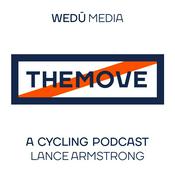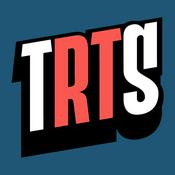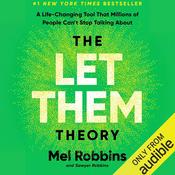Verfügbare Folgen
5 von 13
- Episode 12 - Lighting for the UnseenChapters00:00 The Journey into Cinematography13:00 Influence of Japan on Artistic Perspective18:55 Evolving Views on Visual Effects32:07 Lighting Techniques and VFX Integration43:17 The Pressures of Filmmaking and VFX44:28 The Subtlety of Visual Effects45:14 Seamless Integration of VFX in Storytelling48:29 The Harmony of Practical and Visual Effects49:50 Innovations in Cinematography and VFX52:21 The Evolution of Filmmaking Technology55:15 The Future of Visual Effects and Technology57:28 Augmented Reality and the Future of Cinema01:01:29 The Changing Landscape of Film Projection01:07:28 Advice for Emerging Filmmakers01:12:02 The Importance of Embracing Failure in Filmmaking01:16:53 Common Mistakes in Visual Effects Planning01:19:42 The Balance of Practical Effects and VFX01:23:06 Navigating the Future of Cinematography01:31:31 The Evolution of Digital Cinematography01:38:25 Emerging Technologies in Cinematography01:47:10 The Importance of Communication in CinematographyDescriptionWhat does it mean to be a cinematographer in an age where visual effects are everywhere—but ideally invisible?In this episode, we sit down with Eben Bolter (The Last of Us, Slow Horses, Cape Fear, Night Teeth) to explore the evolving relationship between cinematography and VFX. Eben shares his unlikely path from marketing exec to acclaimed DP, the lessons he took from Japan about discipline and artistry, and why his “film school” was a London short-film grind that taught him everything from composition to collaboration.We dive into: 🎥 The subtle art of lighting for VFX integration (and why he’s done with green/blue screens). 🌧️ The blend of practical effects and digital extension—rain, fire, and beyond. 🕹️ Why games and cinematography are closer than most people think. 🎞️ How digital cinematography still chases the “film look”—and what might come next. ⚡ The role of failure, risk, and accidents in shaping unique visuals. 👀 Why the best VFX are the ones you never notice.From The Last of Us road trips you can’t tell were blue screen, to turning New Orleans into Los Angeles with invisible palm trees, Eben shows us how VFX “save the day” in ways audiences never realise. Along the way, he reflects on the future—HDR, AI, VR—and the need for cinematographers to stay flexible, curious, and relentlessly collaborative.If you’ve ever wondered how the unseen work of VFX and cinematography merge to create the images that move us, this conversation will change how you look at the screen. Hosted on Acast. See acast.com/privacy for more information.--------1:23:32
- Episode 11 - A Director's Perspective on Visual EffectsChapters00:00 The Art of Pitching and Filmmaking02:16 Early Influences and Journey into Filmmaking04:47 Directing Style and Identity07:36 Collaboration and Working with Actors09:52 Visual Effects and Storytelling12:07 Practical Sets and Creative Choices14:33 Integrating Visual Effects in Filmmaking17:25 The Role of Actors in Visual Storytelling20:45 Collaboration and Creative Alignment23:51 Embracing Flexibility in Direction26:10 Creating an Empowering Environment on Set27:25 Navigating the Pressure of Visual Effects28:17 Embracing Technology in Filmmaking29:11 The Evolution of an Artist33:37 Personal Growth and Artistic Identity38:23 Lessons from Visual Effects Collaboration42:41 Advice for Aspiring Directors👀 WHO SHOULD LISTEN?✅ Directors who want to understand how to bring emotion into VFX-heavy storytelling✅ Writers curious about blending genre, comedy, and sci-fi into something fresh✅ Producers navigating collaboration across departments without losing the vision✅ Artists interested in how their work connects directly to performance and story✅ Anyone who’s ever wondered how you pitch Marvel a 60-page doc and actually pull it off📌 KEY TAKEAWAYSThe Origin Story: From Saturday drama clubs to MarvelKate shares how her love of theatre, comedy, and character work shaped her path from indie projects into mainstream hits like Sex Education and Loki.Directing Loki’s MemoriesOne of her most iconic contributions: reimagining how Loki’s past could be shown through VFX, turning a potential exposition dump into an emotionally charged sequence that deepened the character’s journey.Collaboration Without Losing Your VoiceKate opens up about working with huge teams — production designers, cinematographers, VFX supervisors — and how she balances their creativity with her own vision.Comedy as a SuperpowerFrom improv techniques to handling failure, Kate explains why comedy timing and playfulness can be powerful directing tools, even on the biggest sets.Thriving on LimitationsKate reflects on why constraints often fuel her best ideas — and how directors can find freedom within boundaries.🧠 BIG IDEAS TO REMEMBERStory comes first — VFX is a tool to serve it.Limitations spark creativity, abundance can dilute it.Collaboration doesn’t mean compromise — it means trust.Comedy isn’t just funny — it’s a way of seeing the world.Failure isn’t the end — it’s often where the best ideas start. Hosted on Acast. See acast.com/privacy for more information.--------44:44
- Episode 10 - A Coach's Guide to WellbeingChapters00:00 Farewell and Reflection on the Journey01:57 The Shift from Production to Coaching03:55 The Brilliance of People in Visual Effects06:24 Adapting to Industry Demands08:17 Motivation and Ambition in Visual Effects10:45 Leadership and Team Dynamics14:32 The Essence of Leadership18:26 Authenticity in Leadership22:41 The Impact of Team Harmony24:09 Effective Leadership Qualities26:31 Emotional Intelligence in Leadership31:33 Understanding Coaching32:59 Coaching vs. Counseling34:27 Navigating Coaching and Therapy37:19 Coaching vs Mentoring: Understanding the Distinction40:18 Challenges in the VFX Industry: Mental Health Impacts42:12 Success Stories: Coaching Transformations45:24 Career Trajectories: Navigating Expectations in VFX50:09 Leadership in VFX: The Need for Training and Clarity52:27 Positivity and Personal Growth: Living True to Values54:51 Positive Changes in the VFX Industry: A Retrospective58:17 Self-Care and Collective Responsibility in VFX01:01:11 Building Relationships: The Key to Support01:04:35 The Future of VFX: Navigating Industry Changes01:07:32 Defining Success: Fulfillment and Contribution01:09:00 Resilience and Stress Management: Practical Tips01:10:54 Influential Figures: The Impact of Mentorship01:12:17 Representation in Media: A Call for Diversity01:13:41 Optimism for the Future: Contributing to Industry Growth👀 WHO SHOULD LISTEN?✅ Anyone interested in growth✅ Artists looking to understand production from the inside✅ Team leads wanting to lead with more humanity✅ Anyone considering a shift in their creative career✅ Studios thinking about how to retain talent and build better teams📌 KEY TAKEAWAYSEmotional Intelligence Is the Most Underrated SkillKindness, empathy, and active listening aren’t soft skills — they’re leadership muscles. Debra shares how managing egos, expectations, and energy on a team takes real emotional strength.Building a Team Isn’t About Filling SeatsDebra discusses the value of assembling crews based not just on skillsets but chemistry, trust, and shared values — and how those choices ripple into the work.Surviving — and Thriving — Through UncertaintyFrom contract instability to changing budgets, VFX production is no stranger to pressure. Debra reflects on how she’s stayed grounded and grown through tough transitions.The Industry Is Shifting. So Should Leadership.Old-school production models aren’t built for the world we’re living in now. Debra makes a case for modernising how we lead — with humanity, clarity, and a long-term view of what actually sustains teams.🧠 BIG IDEAS TO REMEMBER→ EQ isn’t optional. It’s what keeps high-pressure environments functional.→ Culture isn’t a bonus. It’s the job.→ The future of VFX leadership is quieter, wiser, and more collaborative. Hosted on Acast. See acast.com/privacy for more information.--------1:15:44
- Episode 09 - Inside The Frame: The Artist's RoleChapters00:00 Introduction to Visual Effects and the Guest01:43 Jeroen Desmet's Journey into VFX10:23 Defining the Artist's Role in VFX17:19 The Importance of Resilience in Artists18:59 The Generalist Approach to Problem Solving26:21 The Rewards of Working in VFX32:03 Creative Roots and Family Influence34:13 The Pain of Perfectionism in Art36:49 Balancing Pressure and Performance41:53 Learning from Challenges in the Creative Process46:42 Navigating Early Career Challenges48:53 Reflections on Career Choices and Growth51:45 Keeping Up with Industry Changes54:34 Work-Life Balance in Visual Effects01:00:59 Transformative Experiences and Self-Reflection01:03:37 Leadership in the Creative Industry01:07:03 The Importance of Credit and Recognition01:09:53 The Misconceptions of CGI and Practical Effects01:14:02 Building Trust with VFX Supervisors01:18:07 Mental Health and Emotional Resilience in the Workplace01:21:58 Advice for Aspiring Artists and Common Mistakes01:25:59 Reflecting on Career Moments and Industry Changes👀 WHO SHOULD LISTEN? ✅ Artists navigating early or mid-career decisions ✅ Producers and supervisors wanting to better support their teams ✅ Anyone who’s felt undervalued or overwhelmed in creative production ✅ Students or juniors wondering how to break in — and stay in ✅ Directors who want to get the best out of their VFX artists🧠 BIG IDEAS TO REMEMBERGreat artists aren’t born — they’re built, slowly, through mentorship and experience.Communication isn’t just a soft skill — it’s a survival skill.Generalists are problem-solvers — not “jacks of all trades.”The better the brief, the better the work.Respect is currency — and it costs nothing to give.📌 KEY TAKEAWAYSThe Generalist’s Journey Jeroen talks candidly about the steep learning curve in VFX, and what it means to grow into a generalist role. From learning on the job to knowing when to specialise, his story is one of trial, error, and self-discovery.VFX Isn’t Just About Tools Beyond Houdini, Nuke or Maya — this is about how artists think. Jeroen breaks down how problem-solving, communication and patience are just as important as any software.Collaboration Is Everything Between producers, supervisors and artists, trust and transparency make or break the process. Jeroen shares how healthy tension can push creativity — but lack of respect can destroy morale.Burnout Is Real We talk honestly about the cost of staying “always on.” From work-life balance to dealing with stress in fast-paced environments, this episode explores the emotional toll the job can take — and how to stay in the game.What Artists Wish You Knew Jeroen doesn’t pull punches. Whether you’re a director, producer, or fellow artist, there are things you might be overlooking that can completely change the work experience — and the outcome. Hosted on Acast. See acast.com/privacy for more information.--------1:30:57
- Episode 08 - Inside the World of a VFX ProducerChapters00:00 The Journey to VFX Production05:47 Understanding the Role of a VFX Producer12:14 Creative vs. Logistical Challenges18:01 Navigating Pre-Production Responsibilities23:57 Production Phase Insights29:53 Post-Production and Team Dynamics41:10 Evolving Communication in Visual Effects Production42:40 Selecting the Right Vendors for Visual Effects46:50 Navigating Resource Availability and Vendor Relationships49:20 The Shift from Specialisation to Generalisation in VFX50:04 Synchronising Multiple Vendors in Production55:19 Impact of Industry Changes on Vendor Relationships58:51 Career Progression in Visual Effects01:03:00 The Role of Mentorship in Career Development01:10:41 Reflections on Changing CG Characters and Environments01:18:01 Building Positive Relationships in the Industry👀 WHO SHOULD LISTEN? ✅ Artists who want to understand how production decisions are made ✅ Directors looking to build better relationships with VFX teams ✅ Anyone trying to balance creativity with constraints ✅ Those curious about what makes or breaks a VFX project behind the scenes📌 KEY TAKEAWAYSThe Role No One Sees — But Everyone Feels Producers are often the glue holding everything together, managing timelines, budgets, and relationships — all while trying to protect the creative process. Terron gives us a rare look behind the curtain of a role where pressure, care, and conflict collide daily.Where Art Meets Logistics From supervising Stranger Things Season 4 to delivering Dune: Prophecy, Terron walks us through how a VFX Producer balances artistic integrity with brutal practical constraints — and why every decision can be both a creative and political act.The Production-Side Experience Working from the production’s side comes with unique challenges — higher stakes, tighter turnarounds, and even greater scrutiny. Terron shares the unseen demands of delivering world-class VFX for major studios and streamers.How Culture Affects Output This episode digs into how company culture, work-life balance, and team dynamics impact not only morale, but the final pixels on screen. Terron reflects on what still needs fixing — and where things are finally starting to shift.Producer Burnout Is Real From burnout to blurred boundaries, Terron talks openly about the toll of always being “on” — and why longevity in this role requires more than resilience. It requires a new kind of leadership.🧠 BIG IDEAS TO REMEMBERProducers aren’t just organisers — they’re creative translators and emotional anchors.The best VFX comes from trust, not pressure.Great production isn’t about saying yes. It’s about knowing when to say no.Behind every seamless shot is a producer who fought for the team to get it done right. Hosted on Acast. See acast.com/privacy for more information.--------1:21:46
Weitere Kunst Podcasts
Trending Kunst Podcasts
Über Pixel Puzzle
Pixel Puzzle is a platform dedicated to revealing what visual effects (VFX) are really about — beyond the magic, beyond the myths, beyond the credits that roll by too fast to read.We’re here for the artists, the technologists, the dreamers — and for the outsiders who’ve always admired the craft without fully understanding it.Through honest conversations with pioneers, leaders, and unsung heroes of the industry, we break down the walls that separate “the business” from “the art,” and “the audience” from “the work.”Our mission is simple, but urgent:To humanise visual effects.To show the world the reality behind the spectacle — the creativity, the collaboration, the grit, the breakthroughs, the heartbreak, and the future that’s still being written.Who we’re for:📍 VFX artists who want their craft to be seen and respected.📍 Industry professionals who want a clearer, bigger picture.📍 Students, directors, producers, writers — anyone whose work touches the moving image.📍 Curious minds outside the industry who simply want to understand how the magic is made — and why it matters.Why it matters:Because VFX isn't just technology.It's storytelling. It's art. It's culture.And it deserves to be understood — not just admired, criticised, or overlooked.Pixel Puzzle is not about hype. It's about connection. It's about passing the mic to the people who live this craft every day, and helping the world see visual effects the way we see it: Essential. Evolving. Human.👉 Subscribe now and become part of a community that believes in curiosity, creativity, and the joy of seeing the world in a whole new light. Hosted on Acast. See acast.com/privacy for more information.
Podcast-WebsiteHöre Pixel Puzzle, Augen zu und viele andere Podcasts aus aller Welt mit der radio.de-App
Hol dir die kostenlose radio.de App
- Sender und Podcasts favorisieren
- Streamen via Wifi oder Bluetooth
- Unterstützt Carplay & Android Auto
- viele weitere App Funktionen
Hol dir die kostenlose radio.de App
- Sender und Podcasts favorisieren
- Streamen via Wifi oder Bluetooth
- Unterstützt Carplay & Android Auto
- viele weitere App Funktionen

Pixel Puzzle
Code scannen,
App laden,
loshören.
App laden,
loshören.







































